From Reich’s Orgone to CBT’s Reductionism: How America Lost the Soul of Psychotherapy
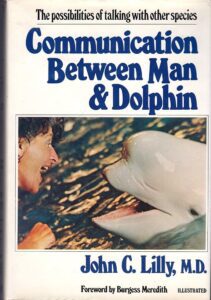 The Radical Pioneer Who Found Trauma in the Body
The Radical Pioneer Who Found Trauma in the Body
In 1954, a wild-haired man stood in a field aiming a strange contraption of hollow metal tubes at the sky. This was Wilhelm Reich and his “cloudbuster”—an array of metal tubes he claimed could harness the power of cosmic orgone energy. To understand how we arrived at this bizarre scene, we must trace the extraordinary journey of one of psychology’s most brilliant and troubled pioneers.
Reich took Freudian psychoanalysis and extended it into a complete cosmology. If everything comes from the power of sex and its repression, if healing comes from acknowledging sexuality as the reason for everything, then Reich reasoned there must be something powering the atoms, the soul, and the cells—something like “orgasm energy” at a molecular level.
This mysterious life force he called “orgone” was associated with sex but could allegedly heal cancer, facilitate psychotherapy, manipulate weather, and by the end of his life, shoot down UFOs that only he could see. Reich was once Freud’s most promising student, but he discovered something profound that would later revolutionize trauma therapy: trauma lives in muscles.
The Body Remembers What the Mind Forgets
Reich’s revolutionary insight was that trauma isn’t just psychological—it’s somatically stored in the body. While his Viennese psychoanalyst colleagues focused on cognitive and linguistic dimensions of experience, Reich was watching bodies. A depressed patient slumped. An angry one clenched. Trauma victims held their breath, took shorter breaths that didn’t fill the lungs, limited heart rate to faster pumping, and upregulated what we now call the polyvagal response.
Reich noticed that trauma victims often pulled their shoulders up, “armored” their hearts (what Eastern medicine practitioners might call the anahata chakra), and experienced tension across the chest. What we now diagnose as borderline personality disorder often involved constriction of the heart, a “black hole sucking in the chest”—a common somatic complaint among people with attachment trauma.
The body wasn’t just carrying the mind around—the body was the important parts of the mind. Reich called this “character armor”: chronic muscular tension that protected against unbearable feelings. Your rigid neck wasn’t just tight—it was holding back years of unshed tears. Your clenched jaw wasn’t just TMJ—it was swallowing decades of unspoken rage from abusive environments.
For Reich, mental illness was literally a case of stuckness—a damming up of life force in muscles and tissues. The key to mental health was breaking down this armor to release blocked energy through deep breathing, physical manipulation, and unrestrained emotional expression in a safe environment.
The Rise and Fall of a Revolutionary
Born March 24, 1897, in Galicia, Wilhelm Reich was a child prodigy who immersed himself in medicine and psychoanalysis, becoming one of Freud’s crown jewels at the psychoanalytic institutes. But Reich had problems—likely what we’d now call schizoid personality disorder. He was brilliant, kind, devoted, and a healer, but he had entrenched beliefs that didn’t change when objective evidence contradicted them.
Yet to say he was “once brilliant and then went crazy” is incorrect. Reich maintained cerebral wit and clarity throughout his life. His writing never became incoherent or misguided. He stayed coherent whether you agreed with his beliefs or not, and was actually more consistent than Freud or Jung in many ways.
Reich believed that repressed sexual energy led to psychological disturbances and physical tensions. He felt that fully satisfying orgasms released pent-up energy, leading to emotional catharsis and well-being. Regular, fulfilling orgasms meant balanced psychology, increasing vitality, and greater emotional expression. Orgasms weren’t just pleasurable—they were catalysts for personal growth and self-discovery.
The Confrontation with Orthodoxy
In 1930, Reich’s unconventional behavior and anger at the institutes for not recognizing his ideas manifested in a confrontational style that alienated him from the relatively passive psychoanalytic community. Feeling marginalized and frustrated, Reich did what any reasonable person would do: he wore a huge knife, carried a large wooden glove, and stood outside the psychoanalytic establishment where he wasn’t invited to conventions.
This was seen as provocative and threatening. In 1934, he was formally expelled from the International Psychoanalytic Association. The incident with the knife became symbolic of his rebellious nature and marked the final rupture between Reich and mainstream psychoanalysis.
From Psychoanalysis to Cosmic Energy
Once cast out, Reich doubled down on everything he believed. If Freud said sexuality was important, Reich said it’s not only important—it’s everything, even the atoms that make up your skin. He extended Freudian ideas about libido into a complete metaphysical system, inventing “orgone energy.”
Reich believed he had discovered a universal life force flowing through all living organisms—like the Force from Star Wars, but much more sexual. This cosmic, sexual, life energy was the same force that made plants grow, clouds form, and enabled thinking. He built “orgone accumulators”—boxes made of alternating layers of wood and metal that supposedly concentrated this energy to treat diseases and improve mood.
The FDA wasn’t amused. In 1941, Reich visited Einstein at Princeton, talking for five hours about his discovery of “biologically effective energy” different from electromagnetic energy. Einstein agreed to test Reich’s orgone accumulator, taking measurements for ten days. When Reich claimed temperature increases proved orgone energy existed, Einstein’s assistant pointed out this was simple convection—when you encase something in aluminum, it gets hot. Einstein concluded it was a temperature gradient, not cosmic sex energy. Reich responded with a 25-page letter. Einstein never wrote back.
The Government Crackdown
By the 1940s, Reich was advocating sexual liberation twenty years before America was ready. Like Alfred Kinsey, he argued that people who repress sex tend to repress other things, creating societal problems. The FDA teamed up with the FBI, frustrated that Reich hadn’t ceased claiming these devices treated cancer.
By 1954, the FDA obtained injunctions against Reich. In 1956, Reich defied court orders. The FBI raided his property, taking all orgone accumulators and research materials. Reich was charged with contempt of court and sentenced to two years in federal prison. When Reich got out, he claimed he could bust clouds and create rain by aiming metal tubes collecting “orgasm energy” at clouds.
Strangely, the same method that created rain also got rid of it—apparently orgone energy knew what to do. Reich decided UFOs were attacking Earth with orgasm energy, but cloud-busting tubes could make the UFOs disappear. He died of heart failure at age 60 in Lewisburg Federal Penitentiary, probably not deserving to be in prison and definitely not deserving to die there.
Reich’s Revolutionary Method
Despite his erratic beliefs, Reich helped many people with somatically stored trauma. His approach involved physical touch—something resembling trauma-informed physical therapy or pelvic floor work. He would sit across from people, much like Arnold Mindell in process-oriented therapy, and poke places that were tight until they released, helping people express emotions stored there.
Peter Levine has a similar technique now in somatic experiencing. Many providers still aren’t comfortable with touch techniques, but Reich was the first somatic psychologist—the first to say the body remembers what the mind forgets and work directly with trauma’s physical holding patterns.
Jung’s Map Meets Reich’s Method
While Jung’s phenomenology was brilliant—his map of the psyche with its archetypes, complexes, and collective unconscious—it was just that: a map. Jung could tell you about your shadow, your journey toward individuation, interpret your dreams, analyze your paintings, trace your mythological patterns back to ancient Babylonian mythology.
But what then? How does somebody use a map of the soul? You’d lie on the couch having profound insights that didn’t necessarily change anything. Jungian psychology was intellectual, prefrontal cortex-based. It didn’t make use of the brainstem insights Jung had correctly observed and diagnosed.
Understanding your mother complex intellectually doesn’t release it from your nervous system or change the autonomic nervous system’s response to emotion. It doesn’t change the polyvagal system. Jung had given us probably the most complete map of the soul anyone had ever drawn, but he hadn’t given us a vehicle to travel it. Reich had found the vehicle but driven it straight off a cliff into UFO territory.
The California Fusion
Reich’s ideas didn’t die with him—they went underground and emerged in the California sun. Alexander Lowen, Reich’s student, developed bioenergetics, taking Reich’s character armor concept and refining it, mapping how different character types held tension. The schizoid splits from their body, the oral collapses into the chest, the psychopath inflates above the diaphragm.
Core energetics, biodynamic analysis, somatic experiencing, and Hakomi therapy emerged from these foundations. These approaches work to treat trauma by combining Jung’s map with Reich’s somatic practitioner methods, especially when Eastern ideas entered in the ’60s, revealing similarities to chakras and other perennial philosophy somatic medicine systems.
Fritz Perls and the Gestalt Revolution
Cut to 1969: Fritz Perls, founder of Gestalt therapy, demonstrates at Esalen. The crowd watches as Perls, cigarette dangling from his mouth, works with a volunteer: “What are you aware of right now?” The woman mentions nervousness. “Good, be nervous. Be more nervous. Show me nervous with your whole body.”
She trembles, shakes, then breaks into sobs from the center of her being. Half the audience thinks they’re witnessing a miracle; the other half thinks it’s a circus act. Someone shouts, “Is this therapy or theater?” Perls yells back, “Yes, it is.”
Perls trained briefly with Reich, absorbing his ability to notice what the body was doing, but combined it with experiential awareness that emotions are arcs that get stuck. That arc has to be completed. When you tell somebody to go through the symptom, often the symptom heals them. The conventional wisdom that “the only way out is through” is something Perls understood early.
Chair Work and Emotional Completion
Perls became associated with chair work. If someone’s afraid of their dad, instead of talking about dad while analyzing sexual fantasies, you put an empty chair next to them: “Here’s dad in the chair. Tell him you hate him.” The person looks at dad, yells, goes through all their anger to the very bottom of the emotion: “You know what? I just wanted you to love me. Why didn’t you love me, Dad?” They cry and heal because they’ve found that love and the root of their suffering internally.
Those Jungian archetypes everyone was analyzing to death? Put them in chairs, talk to them, be them—don’t talk about them, experience them. It’s an early way of understanding emotion as an arc, of understanding polyvagal theory and autonomic response. It’s understanding the shadow in an embodied way.
Suddenly, 20 years of analysis could happen in 20 minutes. Half the community was interested in this innovation; the other half was threatened that it didn’t take 20 years, creating distrust of shortcuts in psychotherapy that persists today.
The Therapeutic Revolution of the ’60s and ’70s
The breakthrough everyone had been waiting for was this fusion: Jung’s profound understanding of the psyche’s depth combined with Reich’s somatic awareness, mixed with Perls’ experiential techniques. This created alchemy in the ’60s and ’70s—a laboratory where different approaches began mixing.
Virginia Satir took family dynamics and those archetypal patterns Jung described, becoming the basis for family therapy. She noticed patterns: the tyrant father, the martyr mother, the scapegoated child—finding new positions, new possibilities, new ways of being.
Arnold Mindell developed process-oriented psychotherapy, combining Jung’s ideas about the unconscious speaking through symptoms with Reich’s body awareness. A backache might be an unlived life; a slip of the tongue might be your true self trying to emerge.
Hal and Sidra Stone developed voice dialogue therapy, a precursor to Internal Family Systems. You could talk to parts directly: your inner critic, your vulnerable child, your pusher self. Let’s not make it about dad or mom—voice the internal systems inside you right now.
The Consciousness Explosion and Government Interest
The culture was ready for magic. Star Wars isn’t science fiction—it’s fantasy set in space. It’s wizards with swords, knights, a culture rediscovering religion that doesn’t believe Jedi are real but feels there’s energy living in our hearts. It’s Dungeons and Dragons.
The US government, in its infinite wisdom, started exploring consciousness because Jung had challenged what we thought was possible. From the ’50s through ’70s, feeling the Soviets were researching psychics, America had to as well. Maybe the microchip and fighter jet wouldn’t be weapons of the future.
You had Uri Geller on TV bending spoons with his mind—most people thought it was real. Remote viewers tried seeing into Soviet installations. The military spent millions trying to create warrior monks by getting them to stare at goats, seeing if any died of heart attacks, thinking future wars would be fought with the mind rather than guns. (Turns out goats just have heart attacks and die a lot.)
John C. Lilly and the Dolphin Experiments
This brings us to dolphins and consciousness research. John C. Lilly was a serious neuroscientist who mapped the brain’s pain and pleasure centers and invented the isolation tank. But somewhere between sensory deprivation tanks and ketamine, he’d gone full mystic.
Lilly believed that cetaceans (whales) had really big brains and sonic abilities. Maybe we could talk to them, translate their language like Spanish, ask them to work as spies, tell us where Russian subs were. NASA and the CIA funded him because in this world of Reichian breakthroughs and Jungian visions, science hadn’t ruled out where consciousness couldn’t go yet.
Lilly’s proposition: “I think one reason dolphins haven’t spoken English yet is that no one gave them LSD. If you give dolphins LSD with a good teacher, maybe they can talk to people, and eventually those dolphins will let us talk to God.”
Margaret Howe and Peter the Dolphin
Cut to 1965: Margaret Howe, young and in her twenties, spends months in waist-deep water in a specially constructed flooded house in the Caribbean with a dolphin named Peter. Her job: teach the dolphin English. Peter is given LSD with other dolphins but doesn’t learn English. Instead, he becomes very attached to her and tries to mate.
Without ethics committees and with different conventional wisdom than today, Lilly’s solution was sexual stimulation—maybe then Peter would learn English. This doesn’t work, but it becomes part of their protocols.
Meanwhile, Lilly was taking heroic doses of ketamine in isolation tanks, mapping what he called the “cognitive multi-state cosmos,” contacting entities he called ECCO (Earth Consciousness Control Office). He was losing touch with reality while the William Hurt movie “Altered States” and Mike Nichols’ “Day of the Dolphin” were based on his work.
The Crisis of Confidence and Consciousness Backlash
By July 15, 1979, Jimmy Carter addressed the nation about “a crisis of confidence that strikes at the very heart and soul and spirit of our national will.” He later got crucified for this—it probably ended his political career because you’re not allowed to tell Americans to question the hero myth or infinite potential of westward expansion.
Vietnam, Watergate, oil embargos, stagflation—the American empire wasn’t reflecting power back to its citizens. The systems weren’t working, but instead of creating new visions of how systems should work, America did what all empires do when they stop making citizens feel special: citizens go looking for power elsewhere, mainly internally—personal power, mystical power, the kind Jung had been pointing toward.
When someone in government read a story in Hustler about NASA funding a woman having relations with a dolphin and asked why we were paying for dolphins on LSD funding for consciousness experimentation ended. They drained the pools and sent the dolphins to a park in Mexico, where they reportedly drowned themselves, wanting to return to the lady, the LSD, and relationships they could no longer have.
Aaron Beck and the Cognitive Revolution
Aaron Beck had been watching this chaos. He’d seen 900 people drink Kool-Aid and die in Jonestown. He’d seen boundaries dissolve between therapists and clients, encounter groups becoming trauma re-enactment instead of treatment. He’d seen people with legitimate schizophrenia encouraged to “go into it” and talk to crystals by California psychotherapists claiming it was spiritual emergence.
He’d seen Werner Erhard (proto-cult leader for someone like Keith Raniere of NXIVM) lock people in hotel ballrooms, not let them use bathrooms, break them down with verbal abuse, then sell them “enlightenment” as Buddhism. He’d seen hippies lose enchantment and turn to heroin and theft.
Beck saw beautiful fusion of Jung’s map and Reich’s method become a circus where psychoanalysis took forever, was overly subjective, made everything up, and became harmful when people weren’t given rules. He had a different idea:
“What if we threw all of that out—Reich’s body, Jung’s soul, Perls’ experiments, Freud’s nonsense, the whole messy mystical tradition? What if we returned this to a medical procedure? What if the mind was just a computer, depression just bad programming, and we could debug the psyche like software? Clean, measurable, and empowering.”
The ’80s were happening. The stock market was rising. The crisis of confidence was ending. No touching, no screaming, no dolphins—just cognition leading to behavior you control and can change.
The Great Regression
Cognitive Behavioral Therapy became the answer. Even though Beck wasn’t the salesman these pioneers were and didn’t have half their insight, he understood institutions and what would work within capitalist structures needed to defeat Russia.
America threw away Reich’s discovery that trauma lives in the body, Jung’s mapping of archetypal patterns, and Perls’ methods for working directly with emotional experience. In our quest to find consciousness’s bottom, we found things that scared us—things that didn’t fit in filing cabinets, insurance forms, or profit motives.
We decided consciousness didn’t have a bottom, didn’t need exploring—it didn’t exist. We’re just thoughts, cognitive distortions, inputs and outputs programmable by algorithms. People are incentive structures. The body doesn’t hold trauma. The unconscious is superstition. Pull yourself up by your bootstraps.
The Legacy That Lived On
But Reich’s legacy lived on. The body does keep the score. Despite what you think about Reich, he was undisputedly the first somatic psychotherapist, recognizing what people like Bessel van der Kolk would describe decades later. Everyone is an outsider weirdo until their ideas are copied, and Reich and Jung had their ideas copied extensively, even when people don’t know their origins.
The fear of these depths created perfect conditions for the satanic panic, Reagan and Reaganomics, American conservatism, and Wall Street worship that became the ’80s. When you exhale the body and the shadow, they don’t disappear—they return in the most twisted forms imaginable, bringing demons.
The Road Not Taken
Reich found trauma in the body. Jung mapped its archetypal patterns. Perls showed how to work directly with it. A generation of brilliant misfits had fused the somatic and symbolic, creating therapeutic approaches that could actually heal through intuition and ethics.
But the people who followed were more reckless. They didn’t learn the ethics because ethics didn’t exist—they were implied. When you say “this works” without proper boundaries, people treat it like a magic trick and hurt people.
America threw it all away because we found things that scared us, things that didn’t fit our capitalist structure. We didn’t find the objectivism we were looking for, so we decided consciousness had no bottom and didn’t need exploring.
The question remains: In our current mental health crisis, with evidence-based practice failing, will we finally integrate Reich’s somatic discoveries with Jung’s psychological maps and Perls’ experiential methods? Or will we continue pretending that consciousness is just software that can be debugged through cognitive interventions alone?
The dolphins are gone. The pools are drained. But the body still keeps the score, and the shadow still returns when exiled. The tools for genuine transformation exist—we just have to find the courage to use them again.
Bibliography
- Beck, Aaron T. Cognitive Therapy and the Emotional Disorders. International Universities Press, 1976.
- Campbell, Joseph. The Hero with a Thousand Faces. Pantheon Books, 1949.
- Jung, Carl Gustav. The Archetypes and the Collective Unconscious. Princeton University Press, 1969.
- Levine, Peter A. Waking the Tiger: Healing Trauma. North Atlantic Books, 1997.
- Lilly, John C. The Center of the Cyclone. Julian Press, 1972.
- Lowen, Alexander. Bioenergetics. Coward, McCann & Geoghegan, 1975.
- Mindell, Arnold. Working with the Dreaming Body. Routledge, 1985.
- Perls, Fritz. Gestalt Therapy: Excitement and Growth in the Human Personality. Julian Press, 1951.
- Reich, Wilhelm. The Function of the Orgasm. Farrar, Straus and Giroux, 1942.
- Reich, Wilhelm. Character Analysis. Farrar, Straus and Giroux, 1945.
- Reich, Wilhelm. The Mass Psychology of Fascism. Farrar, Straus and Giroux, 1946.
- Satir, Virginia. Conjoint Family Therapy. Science and Behavior Books, 1964.
- Stone, Hal and Sidra. Embracing Our Selves. New World Library, 1989.
- van der Kolk, Bessel. The Body Keeps the Score. Viking, 2014.
- Shamdasani, Sonu. Jung and the Making of Modern Psychology. Cambridge University Press, 2003.


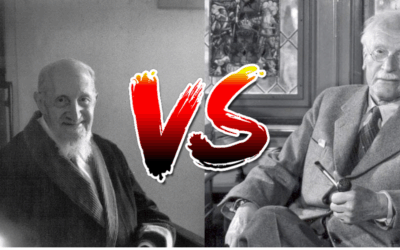


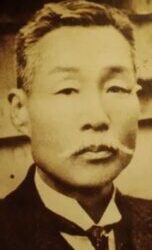
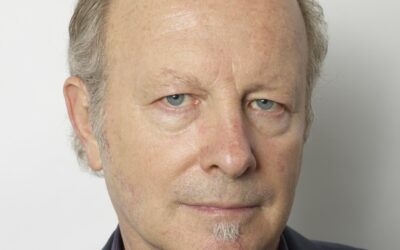
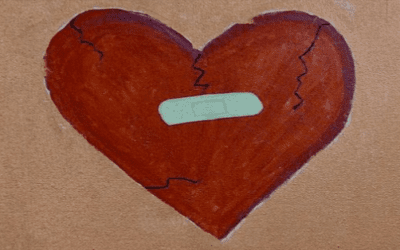
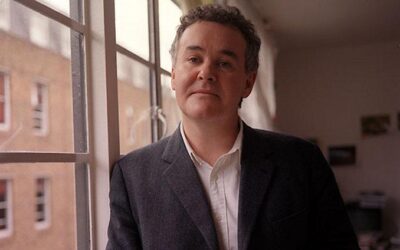
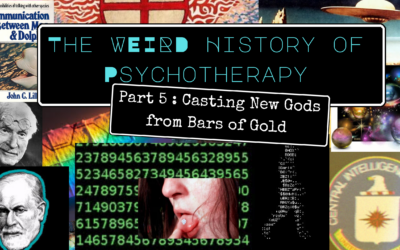
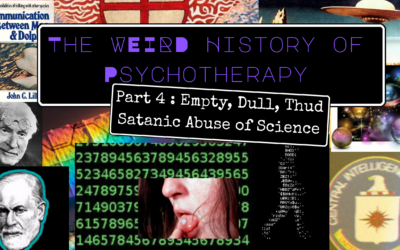














0 Comments